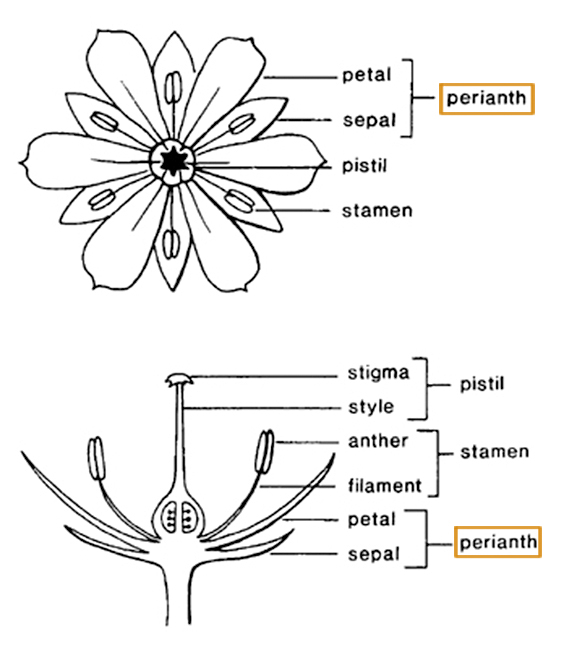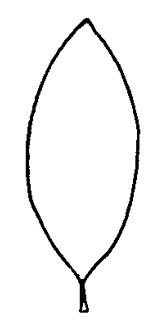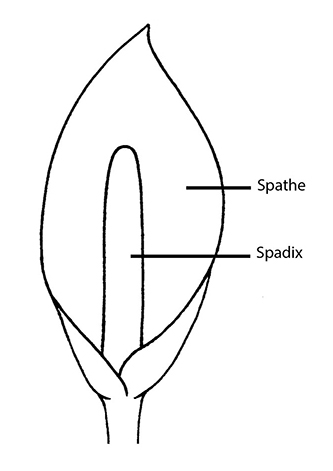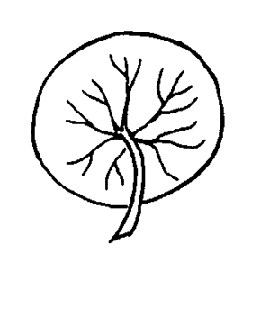Orontium L.
golden club
Araceae
eastern North America
Orontium aquaticum L.
Europe
not weedy
deep-rooted emergentemergent:
(adj) (syn. emersed) with parts raised out of the water; extending up out of the water
 rosetterosette:
rosetterosette:
(n) a radiating cluster of leaves, usually close to the ground at the base of a plant
 plant
plant
Annual or perennialperennial:
(adj) (of a plant) having a life cycle of more than two years
 . Rhizomerhizome:
. Rhizomerhizome:
(n) an underground stem, usually growing horizontally, from which both roots and shoots emerge directly; the thick, above-ground stem of ferns
 stout and deeply rooted. Leaves in a basalbasal:
stout and deeply rooted. Leaves in a basalbasal:
(adj) at or pertaining to the base, or point of attachment
 rosetterosette:
rosetterosette:
(n) a radiating cluster of leaves, usually close to the ground at the base of a plant
 ; petioles elongate, sheathed basally; leaf bladeblade:
; petioles elongate, sheathed basally; leaf bladeblade:
(n) (syn. lamina) the flat, expanded part of a leaf, frond, or petal (excluding, e.g., the petiole)
 ellipticelliptical:
ellipticelliptical:
(adj) in the form of an ellipse (oval)
 , submergedsubmerged:
, submergedsubmerged:
(adj) (syn. submersed) under water; submerged below the water surface
 , floating or emergentemergent:
, floating or emergentemergent:
(adj) (syn. emersed) with parts raised out of the water; extending up out of the water
 , venationvenation:
, venationvenation:
(n) the arrangement of veins in a leaf
 parallel; marginmargin:
parallel; marginmargin:
(n) edge; rim
 entire. Inflorescenceinflorescence:
entire. Inflorescenceinflorescence:
(n) the arrangement of flowers on the floral axis
 a spadixspadix:
a spadixspadix:
(n) a spike of small flowers borne on a thick, fleshy axis
 borne on an elongate pedunclepeduncle:
borne on an elongate pedunclepeduncle:
(n) the stalk of a flower cluster or inflorescence
 ; spathespathe:
; spathespathe:
(n) a large bract or bracts subtending and often enclosing an inflorescence
 reduced to base of spadixspadix:
reduced to base of spadixspadix:
(n) a spike of small flowers borne on a thick, fleshy axis
 and apparently absent when mature; spadixspadix:
and apparently absent when mature; spadixspadix:
(n) a spike of small flowers borne on a thick, fleshy axis
 elongate, yellow. Flowers in upper portion of spadixspadix:
elongate, yellow. Flowers in upper portion of spadixspadix:
(n) a spike of small flowers borne on a thick, fleshy axis
 male, in lower portion bisexualbisexual:
male, in lower portion bisexualbisexual:
(adj) having both male and female sexual reproductive structures on one individual or in one flower
 . Berries with single seed. Dispersal by seed.
. Berries with single seed. Dispersal by seed.
streams and shallow pools
Orontium contains only one species. It is often found in acidic swamps and coastal streams.